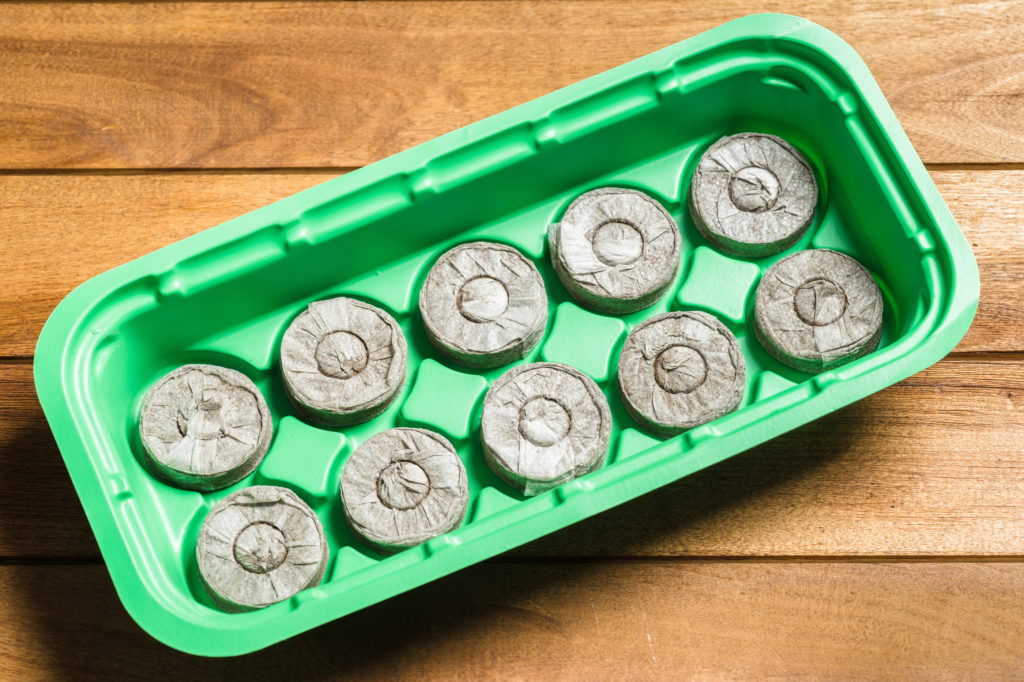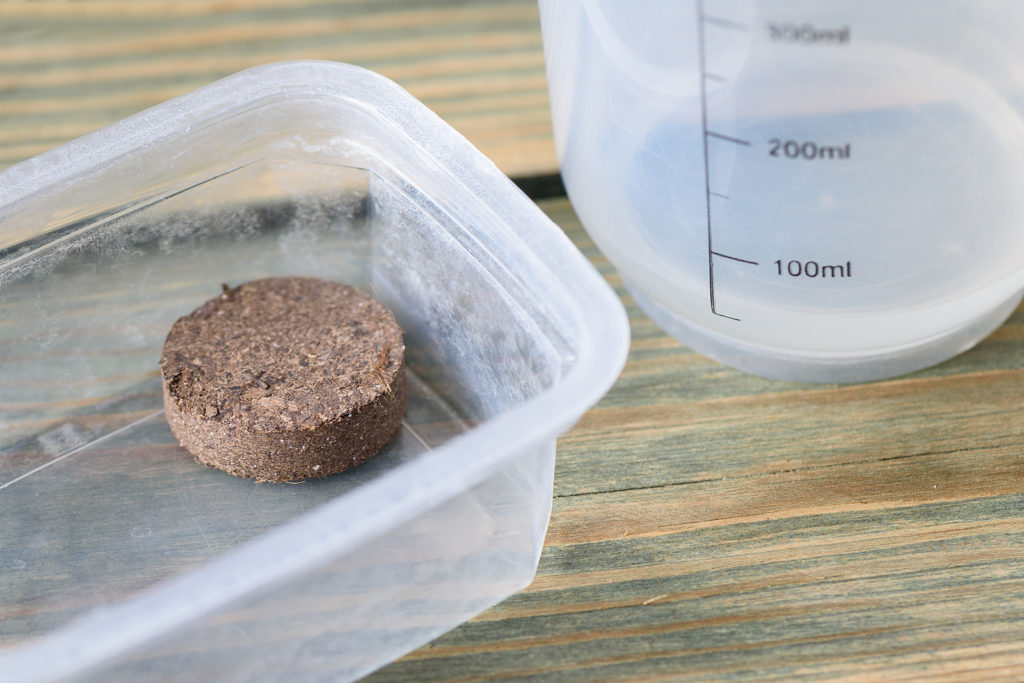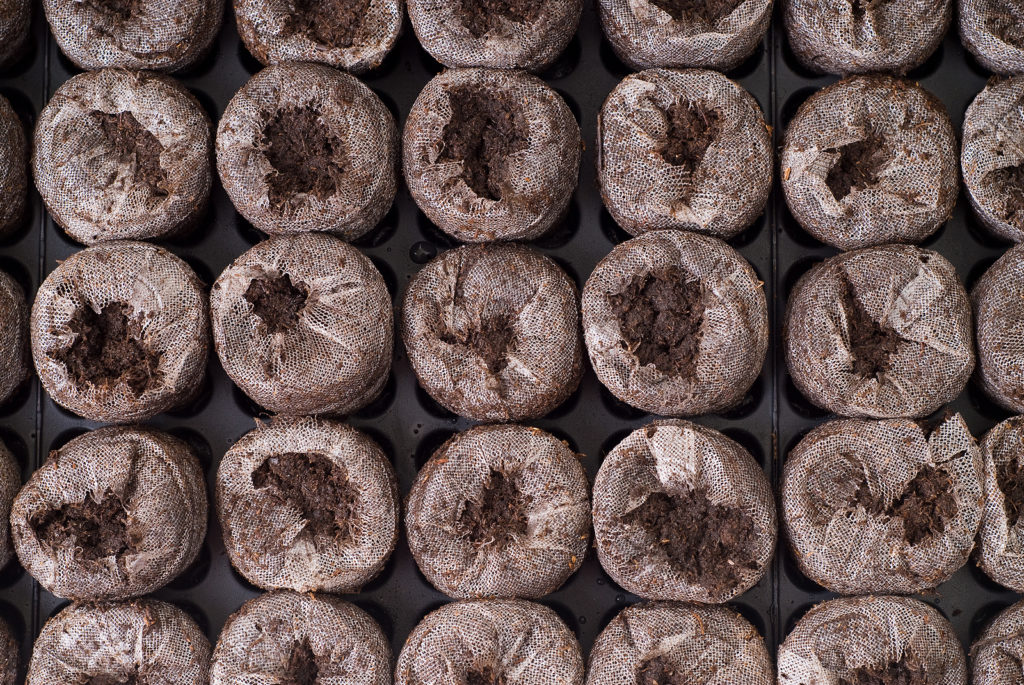Peat pellets are used for seed starting. Peat pellets are compressed disks of dehydrated peat moss and other organic materials. They are used to germinate seeds indoors before transplanting seedlings into the garden. A peat pellet is a self-contained pot and planting medium all in one.
When it comes to gardening and horticulture, peat pellets have become increasingly popular due to their convenience and effectiveness. Whether you are a seasoned gardener or a beginner, investing in quality peat pellets can significantly enhance your gardening experience. However, with so many options available on the market, it can be challenging to choose the right product for your needs. This comprehensive buyer guide will help you navigate through the essential factors to consider when researching and purchasing peat pellets.

Peat pellets described
A peat pellet is a small brown disk about 1½ inches wide and ¼ inch thick made from compressed peat and sometimes wood fibers. A peat pellet is commonly sterile and pH balanced. It expands on contact with water to become a combination small pot of peat and growing medium.
Peat pellets are encased in a light biodegrable fabic that keeps the peat intact. Some versions expand to 1 2/3 inches square, some expand to 2 3/8 inches square. Another version is a block of cubes stamped out of a whole sheet of dehydrated peat; some brands include fertilizer and use a gel instead of a net to hold it all together
Peat pellets are used for starting slow-growing vegetables and annuals from seed. Once the seedlings have grown and have been thinned to only one plant per pellet, the pellet itself is set direclty in the garden avoiding transplant shock.

How to use peat pellets
Peat pellets are easy to use. Follow these steps:
- Place pellets in a water-tight tray or container and add 1½ inches of warm water. Tepid water causes pellets to expand more quickly.
- Pellets will expand in water in just a few minutes, but pellets can sit in water for an hour or more. Keep the pellet in the tray or container so that excess moisture can drain away.
- Peel back the biodegrable fabric or netting at the top of the pellet and fluff the peat. Add 2 to 3 seeds per pellet. Light cover the seed with peat.
- Place the pellet in a bright window or under grow lights. Keep the pellet just moist, not wet. Once seeds begin to germinate, the medium should be kept evenly moist.
- Once seedlings are a couple of inches tall and have true leaves, they can be transplanted into the garden or into a container. Harden off seedlings before you transplant them outdoors.
- The pellet can be transplanted together. Be sure to trim off any fabric or netting material above the soil line so it does not wick water away.
Peat pellet buying tips
Peat pellets have the advantage of being premeasured, sterile, and easy to handle, making them a convenient choice for both professional gardeners and hobbyists. Peat pellets are convenient if you are starting plants from seed because there is no soil mix nor pots to fill. After planting, peat pellets decompose in the soil. When purchasing peat pellets keep the following in mind:
Pellet size
Peat pellets are available in various diameters, typically ranging from 1 inch to 3 inches. The size you choose depends on your specific requirements – smaller pellets are suitable for single seeds or delicate seedlings, while larger ones are perfect for transplanting larger plants. Larger pellets provide more space for root development, making them ideal for starting larger seeds or transplants. On the other hand, smaller pellets are more suitable for fine seeds or delicate seedlings. Moreover, some peat pellets have a round shape, while others come in the form of flat discs. The shape is relevant if you have limited space or prefer a specific design for your gardening setup. Small peat pellets are suitable for starting seeds. If you use peat pellets for starting cuttings, you may want a larger size. Some pellets come in a traditional round shape, while others are designed as compressed discs or even coir pots. Evaluate your planting needs and choose the shape that best suits your requirements.
Peat quality and nutrients added
High-quality peat ensures that your seeds or plants receive the necessary nutrients and moisture retention for healthy growth. Look for peat pellets that are made from well-sourced sphagnum peat moss, as this type of peat is known for its excellent water-holding capacity and nutrient-rich composition. Choose peat pellets made from high-quality, well-aged peat moss. This ensures that the peat has fully decomposed and is free from contaminants or harmful substances. Peat that has undergone proper processing will have excellent water retention and a neutral pH, providing an optimal environment for plant growth. Some peat pellets may be enriched with nutrients. If you intend to cultivate delicate plants or have specific nutrient requirements for your plants, consider opting for nutrient-enriched peat pellets. They provide an excellent foundation for seedlings and young plants, promoting healthy and vibrant growth.
Expansion and water retention
Consider the expansion and hydration process of the peat pellets. Most peat pellets are designed to expand when hydrated, providing ample space for seeds or transplants. However, the expansion rates can vary among different brands. Look for pellets that expand evenly and maintain their shape after hydration. Additionally, ensure that the pellets absorb water easily and retain moisture well, as this is crucial for successful germination and plant growth. Consider the amount of water retention you need for your plants. Different peat pellets have varying water-holding capacities, ranging from high to low. If you tend to forget about watering your plants or have plants that require consistent moisture levels, choose peat pellets that have higher water retention capabilities. Conversely, if you prefer to have more control over watering or have plants that prefer drier conditions, opt for peat pellets with lower water retention.
Packaging
Some brands provide peat pellets in individual trays or cells, while others offer them in bulk quantities. Individual cell packaging can be a great choice for precise seed starting and transplanting, providing each plant with its designated space. On the other hand, bulk packaging is more suitable for those who require a larger amount of peat pellets or want to customize their gardening setup. Consider your gardening goals, available space, and the number of plants you plan to grow when deciding on the packaging type.
Environmental impact
Consider the environmental impact of the peat pellets you choose. Peat extraction can cause significant damage to fragile ecosystems, and sustainable alternatives are increasingly available. Look for peat pellets that are made from renewable resources or choose ones that have been certified by environmentally conscious organizations.
User reviews
Look for reputable brands or products that have received positive reviews from other customers to ensure you are purchasing a reliable and quality product. Read reviews and consider the experiences of other gardeners when selecting peat pellets. Take into account factors such as ease of use, seedling success rates, and overall satisfaction. By learning from the experiences of others, you can make an informed decision and ensure the best results for your gardening endeavors.
Price
Compare prices and consider the overall value for money. While peat pellets are generally affordable, there may be variations in price depending on the brand, quantity, and additional features. Consider the overall quality and features of the product rather than solely focusing on the price tag. Investing in a slightly higher-priced, but superior quality peat pellet can ultimately result in healthier and more successful plant growth.
Researching peat pellets before making a purchase is crucial to ensure you choose the right product for your gardening needs. Consider factors such as size, shape, quality, packaging, and price to make an informed decision. By doing so, you can enhance your gardening experience and enjoy the benefits of using peat pellets in your plant cultivation endeavors.

Peat pellet buyer’s checklist
Peat pellets are a convenient and cost-effective way to start seeds or propagate plants. They are compressed discs made from peat moss, which expands when water is added. Here is a buyer’s checklist to help you choose the right peat pellets:
- Seedling compatibility: Ensure that the peat pellets are suitable for seedling germination and growth. Check if they provide the right conditions for seeds to sprout and develop strong roots.
- Quality: Look for peat pellets made from high-quality peat moss. Peat that is well-screened and free from impurities will ensure better seed germination and healthy plant growth.
- Organic or non-organic: Decide whether you prefer organic or non-organic peat pellets. Organic options are free from chemical fertilizers and pesticides, making them suitable for organic gardening. If you prefer an organic or eco-friendly option, choose peat pellets made from organic peat moss. These pellets are produced without the use of synthetic fertilizers or pesticides.
- Size: Peat pellets are available in various sizes, typically ranging from 1.5 inches to 3 inches in diameter. Consider the size of your plants and the amount of space you have for seedlings when choosing the size of peat pellets.
- Durability: Check for peat pellets that are sturdy and maintain their shape even when saturated with water. This will prevent the pellets from falling apart, ensuring the plants’ root system remains intact during transplanting.
- Moisture retention: Peat pellets should be able to absorb and retain water effectively. Look for pellets that are designed to hold water but also have proper drainage, preventing waterlogging and root rot.
- Compressed or expandable: Decide whether you want compressed or expandable peat pellets. Compressed pellets are small and need to be soaked in water before expanding. Expandable pellets are already expanded and ready to use.
- Sustainable: If you prefer an eco-friendly option, look for peat pellets made from organic and sustainably sourced peat moss. Some manufacturers prioritize environmental considerations and offer certified organic peat pellets.
- Reusability: Some peat pellets can be reused for multiple growing seasons. This is eco-friendly and cost-effective. Look for pellets that are specifically labeled as reusable.
- Amount: Consider the quantity you need based on the number of seeds or plants you want to grow. Peat pellets are usually sold in packs or in bulk, so choose a size that suits your gardening needs.
- Packaging: Check how the peat pellets are packaged. Some come individually wrapped in a mesh or biodegradable material, while others are bulk-packed in bags. Individual packaging is convenient for easy handling and planting
- Availability: Check local gardening stores, nurseries, or online retailers for availability of peat pellets. Ensure that the seller provides quality packaging to protect the pellets during shipping and handling.11. Customer Reviews: Read customer reviews or seek recommendations from trusted sources to ensure the peat pellets have a good reputation for quality and effectiveness.
- Brand reputation: Purchase peat pellets from reputable brands or manufacturers known for their quality products. Read customer reviews and ratings to get an idea of the overall satisfaction with the product.
- Price: Compare prices from different sellers to get the best deal on peat pellets. Keep in mind that cheapest is not always the best option; invest in good quality pellets that will ensure successful seed germination and healthy plant growth.
- Additional features: Some peat pellets come with added features like pre-drilled holes for easier planting or fertilizers mixed into the peat moss to provide nutrients to the plants. Consider these additional features if they suit your gardening needs.















